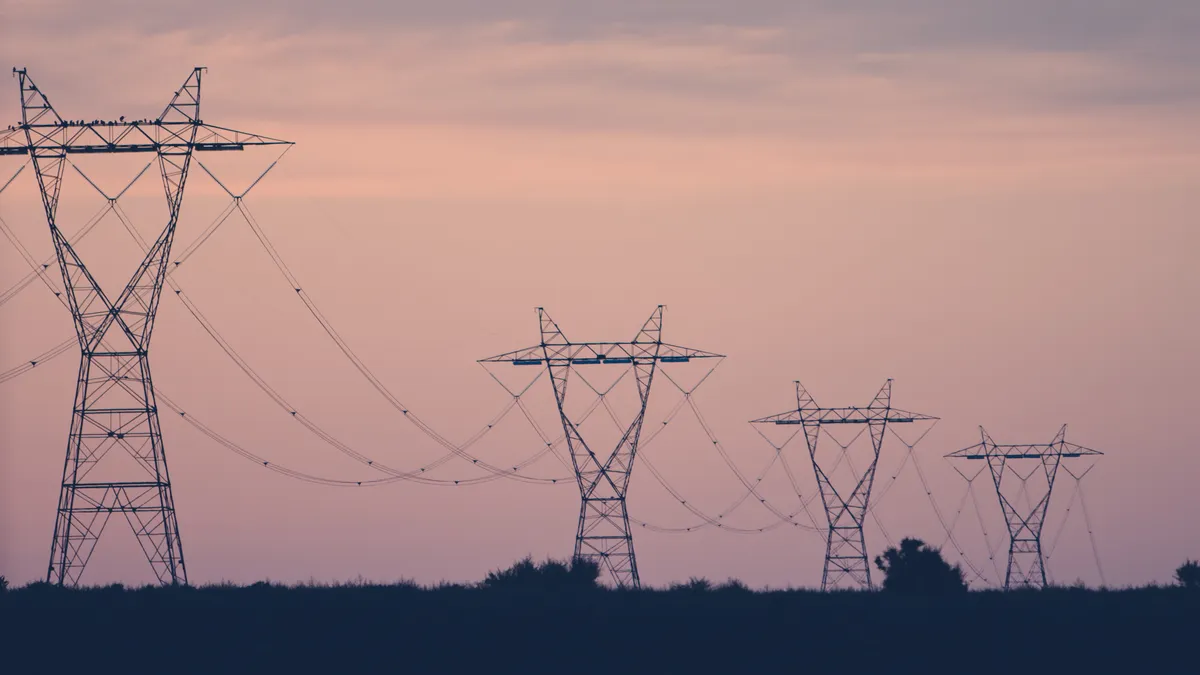Dive Brief:
- Texas regulators on Thursday approved an electric reliability plan for the Permian Basin region, where the oil and gas industry, data centers and other sources of load growth are expected to push demand to about 26 GW by 2038 — equivalent to about a third of today’s summer demand across the entire Electric Reliability Council of Texas footprint.
- The plan includes new and upgraded local transmission projects and the consideration of 765-kV transmission lines to import electricity from other regions of the state. A decision on whether to build the extra high voltage import lines, or to default to 345-kV lines, will be made by May 1.
- “Our members and operators in West Texas have long needed relief through additional electrification in the Permian Basin,” Karr Ingham, president of the Texas Alliance of Energy Producers, or TAEP, said in a statement. “This decision gets us even closer to that long-awaited goal.”
Dive Insight:
The Public Utility Commission of Texas on Thursday directed transmission service providers to begin preparing applications for eight import paths into the Permian Basin region, including five 345-kV import paths and three 765-kV import paths.
“These would be the first 765 kV lines ever built in Texas, and some of the first in the US,” energy analyst and Stoic Energy President Doug Lewin noted in a post on X.
PUC Commissioner Jimmy Glotfelty said he favored the use of 765-kV lines, but the decision should ultimately be made by transmission service providers.
“The amount of congestion that we see in West Texas that this could help solve is somewhere between $100 [million] and $300 million a year that obviously would pay for these lines,” Glotfelty said. The higher-voltage lines would have lower line losses and also run 400 miles shorter than the 365-kV lines, he noted. “That is a very, very positive attribute.”
Total costs for the 765-kV import lines and local upgrades would be about $13.8 billion to serve load in 2038, compared with $12.95 billion for 345-kV import lines and the necessary local upgrades, ERCOT said in a regional reliability plan it filed in July. An addendum filed Sept. 11 altered an import path to “better [align] with the load and generation patterns,” but said costs remained “consistent.”
PUC Commissioner Lori Cobos led development of the plan and called the Permian Basin “the heartbeat of our state and nation’s energy dominance and economy.”
“This plan is a roadmap that will ensure electric reliability in the region for decades to come and facilitate critical transmission infrastructure investment that will ensure the continued success of Texas’ oil and gas industry and support the region’s local communities and our entire state,” she said.
The oil and gas sector called Thursday’s decision a “critical step in ensuring the long-term energy reliability” of the region.
“Infrastructure has not kept pace with the rapid growth in the region’s energy demand, necessitating a bold approach to ensure that the electric grid is equipped to meet current and future needs,” the Texas Oil & Gas Association, Permian Basin Petroleum Association and TAEP said in a joint statement.
“While other states and countries are turning their backs on domestic energy production, decreasing reliability, and increasing costs, Texas is again taking the lead,” PBPA President Ben Shepperd said.















